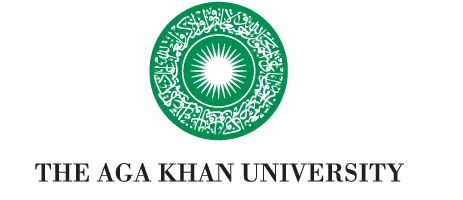Confusing similarities in the brand name and packaging of drugs represent one of the most common reasons for medication errors and are of concern worldwide said speakers at the Medication Safety Symposium at Aga Khan University on Saturday.
With thousands of drugs on market, no drug name is without problems. But look-alike, sound-alike (LASA) drugs increase the possibility of medication errors. From the World Health Organization to the US Food and Drug Administration (FDA), the Institute for Safe
Medication Practices (ISMP) to the Joint Commission International, world regulatory authorities and the global pharmaceutical industry are acting to tackle the risks associated with LASA drugs and thereby reduce the chances of patients being given a medicine that is ineffective for the condition from which they suffer.
Commenting on the problem of look-alike medicines in Pakistan Syed Shamim Raza, Pharmacy Service Line Chief at the Aga Khan University's teaching hospital (AKUH) noted that the majority of ampules are of the same colour, shape and size even though they contain different chemical solutions. He added that many pharmaceutical companies also use identical colour schemes on packaging for different drug dosages which can also cause confusion in a busy pharmacy or hospital.
Speaking about the steps regulators are taking to tackle LASA issues, Drug Regulatory Authority of Pakistan CEO Dr Muhammad Aslam said: “The DRAP has taken note of 104 sound-alike and look-alike drugs. Our registration board is working with these companies to eliminate the possibility of LASA mix-ups and the DRAP is also automating the entire drug registry to help ensure patient safety. We will also introduce 2D barcoding for medicines to enable the easy and automated distinction between various products. Matters relating to the efficacy and safety of medicine is an important area for regulators and I’d like to commend the AKU on organising this conference.”
Other speakers on the day highlighted how procurement teams in hospitals have noticed that different drugs have packages of a similar design, weight, material and size which raises the likelihood of mix-ups. Experts recommended that companies could improve patient safety by adopting unique barcodes for every medicine, by using prominent fonts for important information about drug strength (50 mg versus 100 mg) and by using "
tall man" (mixed case) lettering to emphasise drug name differences. They also called on the Drug Regulatory Authority of Pakistan (DRAP) to conduct a risk assessment about new brand names before approving new product names.
AKUH CEO Hanz Kedzierski mentioned that the AKUH would continue to make major investments in the area of patient safety and would ensure that all medications contain barcodes in line with international standards. He added that barcoding of drugs should be made mandatory as it would help address the problem of counterfeit medicines in Pakistan.
On the issue of sound-alike medicines, Mr Raza explained that many medicines sold in Pakistan have common word stems such as HYDR, MET, CEF and OXIN which can result in mix-ups when reading cursive handwriting on prescriptions, and mistakes in recollecting drug names when pharmacists search for medicines in store. Mr Raza called on regulators to form comprehensive guidelines for retail outlets, healthcare providers and other stakeholders to address persistent challenges in the system.
Jibran Yousuf, Pharmacy Business Manager at AKUH, explained how advanced IT systems, pharmacy automation and barcoding can tackle the problem of look-alike and sound-alike drugs. He noted that the AKUH uses a computerised physician order entry (CPOE) system that requires pharmacists to type and then select drug names before dispensing them. Such systems enable an efficient medication usage process. Importantly, pharmacists can also review orders through the system which adds another safety check.
"A computer-based data entry system helps prevent many medication mix-ups since the software shows up all related medicines and drug strengths. IT systems can also contain dosage guidance which appear if pharmacists are about to recommend an adult dose to a child. Hospital and pharmacies should invest in such systems to address the problems found in manual systems and thereby improve patient safety," Mr Yousuf added.
Experts at the event shared instances of how the US FDA has been tackling the problem: in 2001 their
Name Differentiation Project urged manufacturers to change the packaging of 16 drugs that looked alike. Speakers also drew attention to how the not-for-profit ISMP maintains a
List of Confused Drug Names recording over 600 possible examples of mix-ups between medicines with similar names.
Sharing examples of effective action on LASA drugs, speakers recalled that the FDA and ISMP acted on patient complaints about prescribers confusing a digestive drug Losec with a diuretic Lasix, and a thyroid medicine Levoxine with a cardiac drug Lanoxin. By persuading the manufacturers of the drugs to change product names, US regulators succeeded in protecting patients from consuming the wrong medicine. They called on Pakistani regulators and companies to take similar steps.
In his speech on the day, DRAP's Federal Drug Inspector Dr Obaid Ali urged healthcare institutions in Pakistan to learn from the successes of other countries. He said: "Pakistan is far behind other countries when it comes to standards in drug quality and patient safety. We are aware of new approaches, standards and concerns but when designing regulations one also has to keep in mind that decisions remain grounded in science and that they are reached in an open and honest environment. It is also vital that decisions are applied consistently."
Representatives from the Pakistan Pharmaceuticals Manufacturing Association, information technology specialists, management from leading hospitals as well as leading physicians and nurses were also present at the one-day conference.

